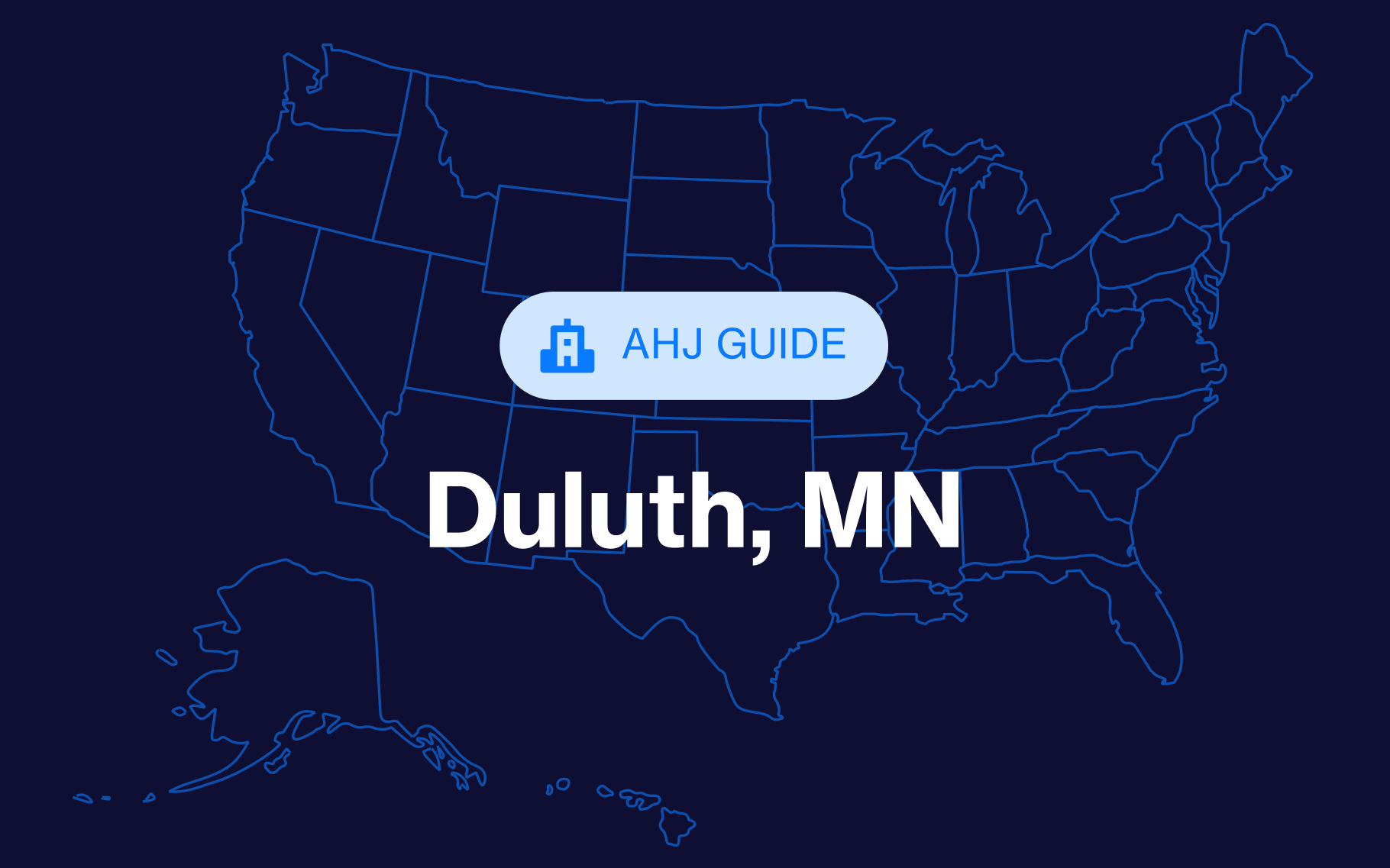From Minneapolis-St. Paul’s dense development to remote cabins in the North Woods, building permit requirements vary by jurisdiction but generally follow the Minnesota State Building Code (MSBC), which adopts and amends versions of the International Building Code (IBC) and International Residential Code (IRC).
The state mandates enforcement of the code in larger municipalities, while smaller towns and rural counties may opt in. Contractors should be prepared for unique considerations such as snow load requirements, energy efficiency standards, and shoreline development restrictions.
Who issues building permits in Minnesota?
Permitting authority in Minnesota is local, but governed by state code requirements.
Examples of permitting authorities include:
- Minneapolis Community Planning & Economic Development
- City of St. Paul – Department of Safety and Inspections
- Hennepin County Building Inspections (for areas outside city jurisdictions)
- Duluth Construction Services & Inspections
- Smaller towns and counties that have opted in to enforce the MSBC
For areas without local enforcement, the Minnesota Department of Labor and Industry (DLI) may provide oversight for certain projects.
When do you need a building permit in Minnesota?
Most construction, alterations, and utility work require a building permit.
Projects requiring permits include:
- New residential or commercial buildings
- Additions, remodels, or major renovations
- Electrical, plumbing, or mechanical system installations or replacements
- Roofing, siding, and window replacements (when structural or energy performance is impacted)
- Decks, garages, sheds, and pole barns
- Demolition projects
- Basement finishing or conversion
- Solar, geothermal, and other energy system installations
Exempt projects often include: Painting, flooring, cabinets, fences under a certain height, and small temporary structures.
Minnesota building permit requirements
Permit applications typically require:
- Completed application form (digital or in-person)
- Construction drawings (stamped by an architect/engineer for commercial or complex projects)
- Site plan showing property boundaries, setbacks, and existing structures
- Contractor license and insurance documentation (if applicable)
- Energy code compliance forms (for new construction and major remodels)
- Estimated project valuation
Additional requirements may include:
- Soil or foundation reports in frost-prone or unstable soil areas
- Shoreline development review for projects near lakes and rivers
- Fire safety plans for commercial and multifamily projects
- Accessibility compliance for commercial buildings
Minnesota building permit costs
Fees are generally based on project valuation, square footage, or flat rates for trade-specific permits.
Typical costs include:
- Residential permits: $1,000-$3,500 for new homes, depending on size and jurisdiction
- Commercial permits: $5,000+ for mid-size projects, with additional fees for plan review and fire safety
- Trade permits (electrical, plumbing, mechanical): $50-$300 each
- Flat-rate permits: $50-$150 for smaller projects such as re-roofing or siding
- Development fees: Impact or system connection charges for water and sewer may apply in growing municipalities
Example: Minneapolis calculates building permit fees based on project valuation plus plan review surcharges.
Unique considerations when permitting in Minnesota
Snow load & frost depth
Building designs must meet strict snow load requirements and account for frost-protected foundations.
Shoreland and floodplain rules
Many properties near lakes and rivers fall under Department of Natural Resources (DNR) restrictions.
Wetland and environmental review
Projects may require approvals if they impact protected wetlands.
Accessibility requirements
The Minnesota Accessibility Code often exceeds baseline federal ADA standards.
State vs. local enforcement
While most urban areas require permits under MSBC, some rural counties may not, creating inconsistencies contractors must navigate.
How to get a building permit in Minnesota
The process varies by jurisdiction, but typically includes:
- Confirm jurisdiction – Identify whether the project is regulated by the city, county, or DLI.
- Zoning review – Verify setbacks, height restrictions, and use allowances.
- Prepare documents – Construction drawings, site plan, and energy compliance reports.
- Submit application – Online portals are available in larger cities like Minneapolis and St. Paul.
- Plan review – Conducted by building officials, zoning staff, and sometimes fire or environmental departments.
- Pay fees – Based on valuation or flat rates for smaller projects.
- Receive permit – Must be posted on-site before construction begins.
- Inspections – Scheduled throughout the project (footings, framing, electrical, mechanical, plumbing, insulation, and final).







